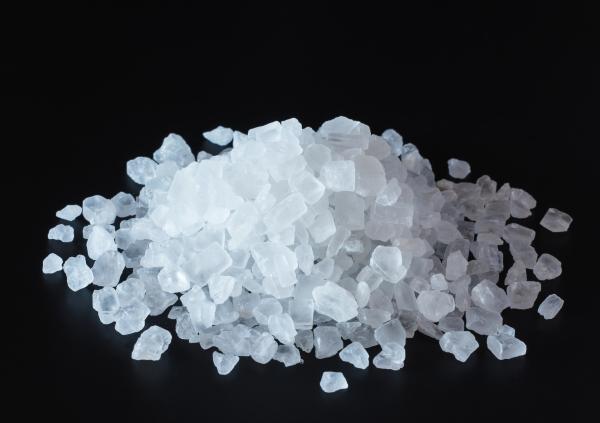
Sometimes the most clever ideas are the simplest. Here is a great example. Surgical masks do not offer adequate protection against viruses. This has been a problem forever, and now it may be solved. By using a little salt.
Surgical masks may prevent people from inhaling pathogens, but even if this protection is complete, a problem remains. The mask is then contaminated by whatever bug it trapped, and simply touching it will be sufficient to spread the pathogen that was filtered out. The net result is that when trying to prevent the spread of a highly contagious germ, such as influenza, the masks are pretty close to useless.
Airborne pathogens are spread by a mist of very small droplets that are expelled during a cough or sneeze. The droplets are trapped in the mask, but the viruses or bacteria that have been trapped are not only still live, but now concentrated. With so many healthcare workers putting on masks and taking them off it is inevitable that they will be touched and then spread to surfaces (or even patients) ,especially in hospitals.
Enter Hyo-Jick Choi, a professor in the University of Alberta Department of Chemical and Materials Engineering. Choi noticed that many people wore surgical masks around during the time that flu or SARS is going around. But he knew that the mask filters were inadequate because they simply became reservoirs for the germs, and thought that he could do better.
His idea came from struggling with a different problem—making oral vaccines into tablets. One very annoying problem that Choi was trying to overcome that when a solution of the vaccine dried, sometimes crystals formed, which killed the vaccine.
So, why not turn a problem in one area into a solution in another? Could crystallization inside a mask kill a virus that was trapped in the filter. Whatever solution he might come up with had to be inexpensive, since so many masks are used. So Choi experimented with the cheapest material around—salt.
The University of Alberta team went to work, trying to find a formulation of salt that could be incorporated into the mask and then kill viruses. They found it. The modified mask trapped viruses, but the salt was a game changer. Now when the virus-containing droplets entered the filter, they were absorbed onto the salt, forming a tiny solution containing the virus plus whatever amount of salt dissolved in the water from the droplet. When the water evaporated whatever amount of salt that had been dissolved in it began to crystallize. Just like crystal formation killed the vaccines he was working with, it also killed the viruses.
The confirmation that the mask would kill viruses in real life situations, and the best formulation were determined by using animal models of infection. Sugar also kills viruses when it crystallizes. The possibility of different flavored surgical masks is intriguing.
Choi has been awarded a provisional patent (1) for his invention, and could end up being quite wealthy if antimicrobial masks become standard practice.
That's nothing to sneeze at.
Article: Universal and reusable virus deactivation system for respiratory protection, Fu-Shi Quan, Ilaria Rubino, Su-Hwa Lee, Brendan Koch & Hyo-Jick Choi, Scientific Reports, doi: 10.1038/srep39956, published online 4 January 2017.
Note:
(1) In the US patent laws have changed. It used to be that the first person/company to invent something was awarded the patent in a dispute. This why all scientists are required to sign and date every page in every notebook. Now, the patent is awarded to the first to file. A provisional patent is a placeholder to secure an early filing date. The inventor then has one year to file a standard patent application.



